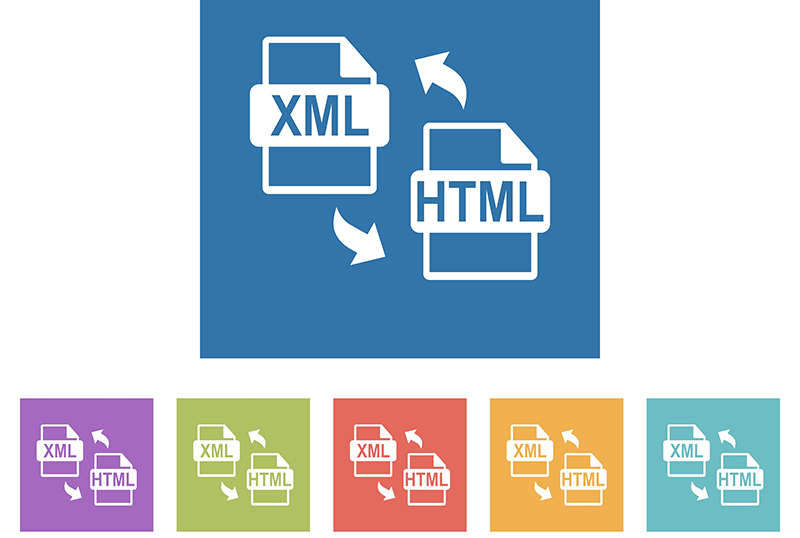Among many mark-up languages, HTML (Hyper Text Markup Language) and XML (Extensible Markup language) are the popular and widely used markup languages. Both are machine- and human-friendly programming languages. They have standard words that are based on syntactical rules of the language. However, they have unique languages and different applications. XML is a bit more human-readable than HTML. HTML conversion services are essential to integrating information flows of businesses.
Before delving into the differences between the two markup languages, it is important to know what HTML and XML stand for.
What is HTML?
HTML is a markup language used to create and design web content. It means HTML is a human-readable computer language that uses various tags and attributes to define the layout and structure of the web. HTML displays the data in a formatted manner. The extension .htm or .html is used in a HTML document. HTML codes can be edited by any basic code editor or even notepad. The codes that are edited can be executed in any browser. The browsers present the content that has to be displayed with or without applying format.
What is XML?
It is a markup language designed to store data. The primary function of XML is the transfer of data. XML is case sensitive. Web pages and web applications are also created using XML. XML is dynamic and this feature is used to transfer the data. The markup language focuses on simplicity, generality, and usability across the Internet. XML is in textual data format and has Unicode for different human languages. It is widely used to represent arbitrary data structures used in web services. XML file is represented as .xml.
Differences between HTML and XML
| HTML | XML |
|---|---|
| It is predefined markup language | It is a framework used to specify markup languages |
| Case insensitive | Case sensitive |
| Structural details are not provided | Structural details are provided |
| The primary function is to present data | The primary function is to transfer data |
| Small coding errors are ignored | Coding errors are not allowed |
| Whitespace can’t be used in the code | Whitespaces can be used in the code |
| Nesting has no effect on the code | Appropriate nesting should be done |
| HTML is driven by format | XML is driven by content |
| The closing tag is not always necessary | A well-formatted XML document requires a closing tag |
| The values of attributes don’t require quotes | XML attributes require quotes |
| HTML offers native object support | Objects are expressed conventionally |
| It has a very brief syntax and yields formatted text | When element-centric approach is used in formatting, documents are lengthy |
With HTML conversion services, a basic text file can be converted into HTML code. The documents with formats .doc, .docx and .txt are created and posted on the internet with the help of an HTML converter. Similarly, conversion of XML to HTML is necessary if we are trying to have uniformity in the presentation of our websites. XML is compatible with all browsers and there are high chances of people accessing the document after conversion. This boosts brand visibility.
High quality conversions can be outsourced to reliable data conversion companies. This ensures that your data is protected, preventing data leakage or unauthorized access. Businesses can save money and focus on their core competencies.




